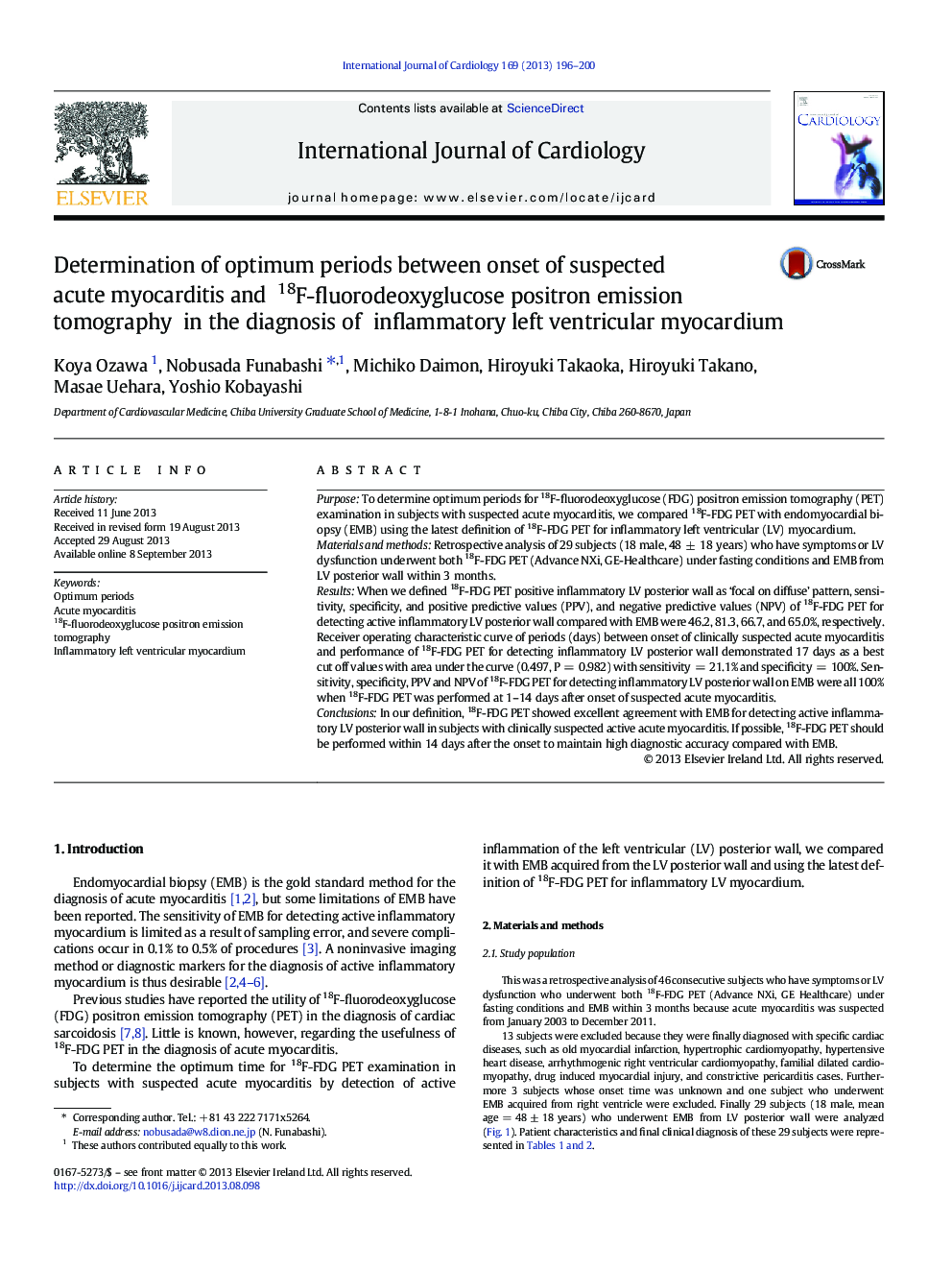| Article ID | Journal | Published Year | Pages | File Type |
|---|---|---|---|---|
| 5974289 | International Journal of Cardiology | 2013 | 5 Pages |
PurposeTo determine optimum periods for 18F-fluorodeoxyglucose (FDG) positron emission tomography (PET) examination in subjects with suspected acute myocarditis, we compared 18F-FDG PET with endomyocardial biopsy (EMB) using the latest definition of 18F-FDG PET for inflammatory left ventricular (LV) myocardium.Materials and methodsRetrospective analysis of 29 subjects (18 male, 48 ± 18 years) who have symptoms or LV dysfunction underwent both 18F-FDG PET (Advance NXi, GE-Healthcare) under fasting conditions and EMB from LV posterior wall within 3 months.ResultsWhen we defined 18F-FDG PET positive inflammatory LV posterior wall as 'focal on diffuse' pattern, sensitivity, specificity, and positive predictive values (PPV), and negative predictive values (NPV) of 18F-FDG PET for detecting active inflammatory LV posterior wall compared with EMB were 46.2, 81.3, 66.7, and 65.0%, respectively. Receiver operating characteristic curve of periods (days) between onset of clinically suspected acute myocarditis and performance of 18F-FDG PET for detecting inflammatory LV posterior wall demonstrated 17 days as a best cut off values with area under the curve (0.497, P = 0.982) with sensitivity = 21.1% and specificity = 100%. Sensitivity, specificity, PPV and NPV of 18F-FDG PET for detecting inflammatory LV posterior wall on EMB were all 100% when 18F-FDG PET was performed at 1-14 days after onset of suspected acute myocarditis.ConclusionsIn our definition, 18F-FDG PET showed excellent agreement with EMB for detecting active inflammatory LV posterior wall in subjects with clinically suspected active acute myocarditis. If possible, 18F-FDG PET should be performed within 14 days after the onset to maintain high diagnostic accuracy compared with EMB.
